The EX30 Isn’t Small, It’s Just Right
- mattaboutcars
- Dec 14, 2024
- 7 min read
Updated: Feb 3
The Volvo EX30 is finally here. The Swedish marque will commence deliveries of its much-hyped entry-level model at the end of 2024. First available is the costlier dual-motor variant, followed by the single motor, which originally captured headlines due to its low $36K starting price.
Source: Volvo Cars Media
Design
Creating one of their most charming and distinctive designs, Volvo shouldn’t struggle to get people in the door to see the EX30. Both its interior and exterior are a lesson in Scandinavian minimalism. While the EX90 exhibits a luxurious touch, the youthful EX30 elegantly incorporates Volvo’s design language while crafting its own identity.
Size
The EX30 is small, but in boxy Volvo fashion, it has plenty of usable space. It’s all many people need, and it is a good first EV for buyers desiring electrification but not ready to invest in larger and costlier options. For many families or couples, it is more of a second car.
Volvo hasn’t played much in the smaller vehicle segment, especially in the US, where the brand is known for family hauling. Since 2018, Volvo’s smallest vehicle has been the XC40, and before that, the C30 3-door hatchback.
So how small is the EX30?
At 166.7 inches long, the EX30 is about half a foot shorter than the larger XC40, which measures 174 inches and is also classified as a subcompact SUV. However, when evaluating its size, it might be useful to note that the EX30 is the same length as the XJ generation Jeep Cherokee, one of the most popular family SUVs of the 1980s and 1990s. This raises the question: Is the EX30 truly small, or have other vehicles just grown very large?
The theme of Scandinavian minimalism extends beyond the size of the vehicle to the restraint executed in the interior.
Interior
The cabin exhibits a warmth, intentionality, and an appreciation for design which is absent from Tesla. Beautifully executed details include a low-sculpted dash, vertical vents, and metal door trim pieces that form into the door handle. The Swedish flags adorning the seats remind occupants they’re in a Volvo, while the lack of physical buttons and knobs remind them they’re in an EV.
These discerning details have been artfully crafted with a sustainability mindset.
Scandinavian Sustainability and Practicality
My tester’s Pixel Knitted seats and door inserts are composed of 100% recycled polyester sourced from PET bottles and are designed for easy cleaning.
Alternatively, the other example featured a wool blend interior. Following the theme of the Pixel Knit, the blend is 70% recycled polyester and 30% “responsibly produced wool.” In addition to repelling dirt, Volvo claims this material is cool during warm temperatures and warm when temperatures drop. Wrapping the lower dash to the upper doors is interior décor trim which is made up of 30% recycled materials.
Interior Space and Storage
Despite its small footprint, Volvo makes remarkable use of interior space and creates an airy feel. There’s plenty of space up front, and while the rear seat isn’t large, it comfortably seats two.
The sliding center console storage compartment protrudes forward with two cupholders and retracts to free up space when not needed. I liked the wireless phone chargers, which are conveniently slanted upward in a cubby, making the phone less likely to slide around. There are also two USB-C ports in the front and two in the rear.

Saab fans might enjoy the window switches, which are housed on the center console instead of on the doors.

A nicely shaped cargo compartment holds 14 cu. ft. behind the rear seats and 32 cu. ft. when the seats are folded. Storage solutions include a detachable parcel shelf and a hidden lower compartment. The EX30 is large enough to carry golf bags, strollers, and even a dresser when the seats are folded.

On the base of the tailgate is a handy diagram (shown) detailing items that fit within the cargo space dimensions.

The rear seats fold in a 60/40 split and the front passenger seat moves forward and tilts downward in typical Volvo tradition to enable more items to be carried. Upfront, there’s a small frunk for additional storage.
Lighting and Sound
Ambient lights are recessed within the door indentation panels and under the dash.
Five lighting options are available: Archipelago, Nordic Twilight, Midsummer, Northern Lights, and Forest Bath.
Audiophiles will appreciate the optional Harman Kardon Premium Sound system, which neatly integrates 5 speakers within a soundbar at the top of the dash below the windshield. The system provides state-of-the-art audio performance via 9 speakers, 3 modes, and a 1040W amplifier.
Scandinavian Minimalism Gone Too Far?
Effectively executed minimalism is rooted in intentionality, whereas minimalism for the sake of minimalism can distract and frustrate drivers. Fortunately, Volvo retained the turn signal stalk, traditional interior door handles, and a steering column shifter. Yet, the EX30 could have achieved a better balance in some areas of functionality.
The things that are missing:
I found the new circular power adjustment control for the seats frustrating. It's challenging to find the exact position needed. I am sure the intention was to reduce the typical 2 to 3-button adjustments, but those have worked successfully for decades with power seats and should have been retained.

Another grievance is the mirror adjustment. Relying on the infotainment screen in conjunction with the steering wheel controls was far more complicated than it needed to be.
Both frustrations are not necessarily daily occurrences in the vehicle, especially if you are the primary or only driver. Then it is more of a “set and forget” strategy.

The biggest issue is the lack of a gauge cluster – which means the driver relies on the center infotainment screen for the speedometer. Thus, drivers must shift their eyes away from directly in front of them to the screen while in motion. During press drives for the EX30, Volvo reps referenced the statistic that “one can build a habit in 1,000 repetitions” as justification for expecting drivers to become familiar with the speedometer on the screen.
Again, these changes take some getting used to. However, after a day or a week, it will likely become second nature to drivers. Many might look at the screen for directions anyway and appreciate that everything is consolidated.
If a head-up display (HUD) had been available, removing the gauge cluster would have made more sense. With a HUD, the gauge cluster information is digitally projected onto the windshield. While the flagship EX90 has both, the EX30 has neither.

Similar to the XC40 and other subcompact SUVs, there's no window between the C-pillar and D-pillar. On a positive note, the blind spot isn’t as large as that of many 3-row SUVs. A larger rear window would have been appreciated instead of the tailgate's high sill.
Getting on the road
I drove the EX30 after the EX90, and while the EX90 drives commendably well for a 3-row SUV, the EX30 is predictably easier to drive. Its maneuverability gives it a “get in and go” mentality. Although some features are overly complicated, driving the EX30 isn’t.
The excellent driving position affords a clear view outward. It’s taller than a sedan and lower than most SUVs. Ride height, combined with upright styling, facilitates easy ingress and egress. Even better, it's not claustrophobic like many “coupe SUVs”.
Despite its spacious interior, the tight exterior dimensions make parking a dream. Its handling was nimble, too. While I appreciated the power of the dual-motor tester, I only spent a few minutes behind the wheel in downtown LA. Thus, I could not fully appreciate the acceleration of one of the fastest Volvos ever.
Powertrain
The dual-motor launch variant delivers 422 hp, 400 lb.-ft of torque, all-wheel drive, and a 0 to 60 mph time of 3.4 seconds. The EPA-estimated electric range is 253 miles, and with DC fast charging, it is estimated to charge from 10% to 80% in 26.5 minutes.
Source: Volvo Cars Media
At $8,000 less, the rear-wheel-drive single-motor offers 268 hp, 253 lb-ft of torque, increases range to 261 miles and can sprint to 60 in 5.1 seconds. A 64.0 kWh battery pack has a peak DC fast-charge rate of 153 kW.
To put things in perspective, the closest competitor, the Mini Countryman SE ALL4 Electric, produces 308 hp and 364 lb-ft of torque. It has a 64.6 kWh battery pack, a 130 kW peak DC fast-charge rate, and a 0 to 60 time of 5.3 seconds.
While the new Countryman has grown to the size of the XC40, it has less power, much slower acceleration, less range, and weaker charging capabilities than the EX30. Thus, buyers may be willing to give up some space with the EX30 if they prioritize these other key metrics.
Who’s the buyer?
The EX30 is a compelling product regardless of size. Sometimes, it is less about having one more entry in a competitive segment and more about offering something buyers didn’t know they needed. Volkswagen successfully did this with the New Beetle in 1998. Not only did it usher in a trend of retro-modernism, but it also drew in buyers who typically may have purchased a family sedan but chose the New Beetle because it spoke more to their emotions.
There isn’t an obvious direct competitor to the EX30. For better or worse, Volvo is carving out a niche here. The EX30 has proven very popular in Europe which has many more entrants in the small car segment.
In the American market, it is much larger than the 2-door Fiat 500e and Mini Cooper Electric and about 10 inches longer than BMW’s former i3 EV. The EX30 is sized similarly to the outgoing Chevy Bolt EUV. It’s about as small as one can get while retaining four doors, five seats, and a lot of functionality.
With the EX30, Volvo has an opportunity to bring back former owners who may have deflected to other brands. Perhaps it’s a baby boomer who drove a 240 and now drives a Prius or a millennial who grew up with an 850 wagon.
The primary concern with the EX30’s appeal is its price. Depending on your perspective, the EX30 is a far more practical alternative to the Fiat and Mini, or it is ambitiously priced given its size, especially as it currently does not qualify for the $7,500 EV tax credit.
Since the brand has traditionally been popular in colder climates, one can assume that the dual-motor all-wheel drive variant will be the model of choice. Starting at $46K, there are many impressive EVs around this price point, many of which are much larger, like the Hyundai Ioniq 5, Kia EV6, Ford Mustang Mach-E, and Nissan Ariya.
Final thoughts
Perhaps it’s the EX30’s small stature, Scandinavian aesthetic, or something else, but it exhibits a back-to-basics charm that’s rare in 2025. The EX30 appeals to nostalgia for the Volvo practicality and simplicity of the past while propelling the brand into the electric future—and you can’t get much better than that.


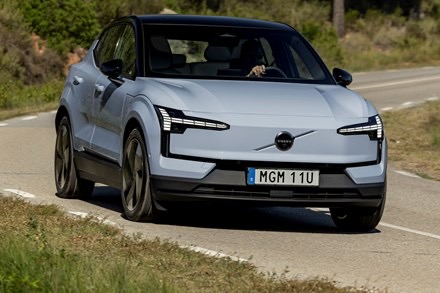

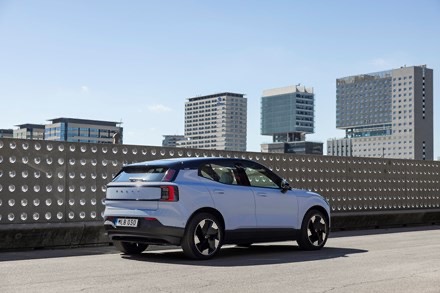

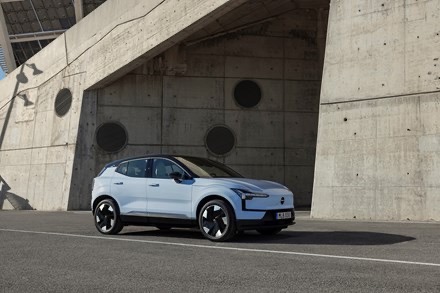

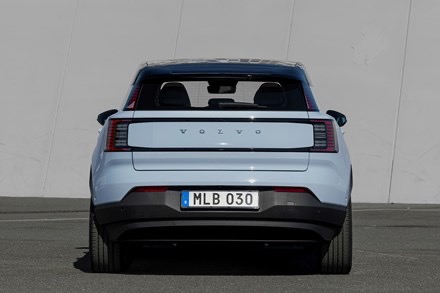

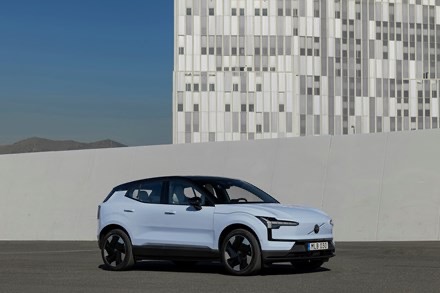

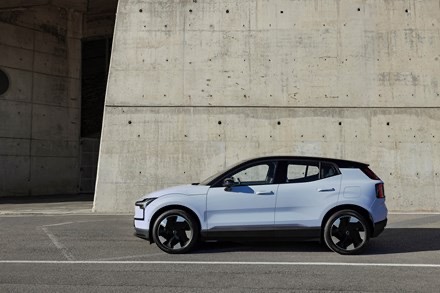





















Comments